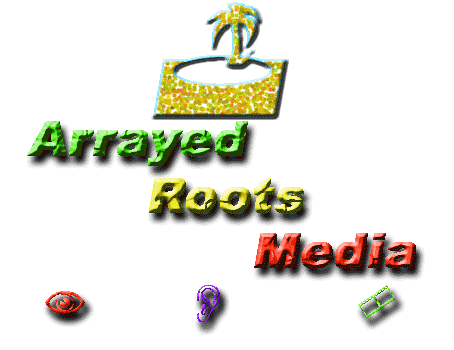

Rastafarian Cultural Page
Blessed is the man that heareth me, watching daily at my gates, waiting at the posts of my doors.
For whoso findeth me findeth life, and shall obtain favour of the Lord.
But he that sinneth against me wrongeth his own soul:
all they that hate me love death.
Proverbs 8,
34-36.
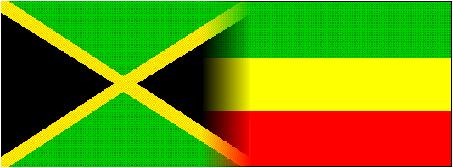

THE ORIGINS
A SKETCH OF RASTAFARI HISTORY
(1995-Norman Hugh Redington, printed by the author's
permission).
THE GARVEYITE AFRICAN ORTHODOX CHURCH. Marcus Garvey, born in Jamaica in 1887, was a Black nationalist leader whose Universal Negro Improvement Association (UNIA) was the most prominent Black Power organization of the 1920s. Although himself a Roman Catholic, Garvey encouraged his followers to imagine Jesus as Black and to organize their own church. To emphasize that the new church was neither Catholic nor Protestant, the name "Orthodox" was adopted and the "filioque" (a phrase added to the Latin version of the Nicene creed in the early Middle Ages but rejected by the Orthodox) was dropped. The African Orthodox Church entered into negotiations with the Russian Metropolia (now the OCA) for formal recognition as an Orthodox jurisdiction. Unfortunately, these negotiations broke down: the Metropolia demanded an unacceptable degree of administrative control, while the Garveyites wanted to promulgate whatever doctrines they chose. Eventually, the African Orthodox bishop was consecrated by the "American Catholics", a group which had rejected the authority of the Pope but was otherwise similar to the Roman Church. The Garveyite Church had thousands of members on three continents, and was a symbol of anti-colonialism in Kenya and Uganda. The African Orthodox in those countries quickly broke off relations with the New York church and instead became part of the Greek Patriarchate of Alexandria and fully orthodox. The same process repeated in Ghana more recently, where Fr. Kwami Labe, a graduate of St. Vladimir's Seminary in New York, has been building a strong Orthodox community on the foundations laid by the Garveyites. Today the African Orthodox Church as such is largely defunct, although the parish of St. John Coltrane (!) in San Francisco remains quite active.
MORE ORIGINS: THE BLACK ISRAELITES. Black slaves always felt an obvious affinity to the enslaved Hebrews; a few took this sympathy to its logical extreme and claimed to be Jews. The spread of information about the Jewish "Falasha" minority in Ethiopia contributed to the growth of Black Judaism during late 19th Century, and Jewish sects emerged in the northern ghettoes alongside Muslim ones. A number of these remain very active today. These groups (a few of them very anti-Semitic in their claim of being "real Jews") are in some cases "Christian", although with an Old Testament emphasis. Frequently they claim that whites have distorted the text of the Bible, and there are attempts to "restore" the text. One of these, of importance in this story, is the "Holy Piby", an occult bible allegedly translated from "Amharic" and emphasizing the destruction of white "Babylonia" and the return of the Israelites to Africa, the true Zion. The Piby was adopted by Rastafarians as the source of their liturgical texts.
GARVEY THE PROPHET. The Marcus Garvey of history books is a mainly political leader interested in making the black race economically equal with the white. In oral tradition, however, he appears as a divinely annointed prophet, speaking of the redemption of his people as coming from a future black african king, he proclaimed "Look to Africa for the crowning of a Black King, he shall be the Redeemer". On november 2, 1930, Ras Tafari Makonnen was crowned king of Ethiopia. Upon his coronation, he claimed for himself the titles of "Emperor Haile Selassie (Power of the Trinity) I, Conquering Lion of the Tribe of Judah, Elect of God and King of the Kings of Ethiopia". Many Jamaicans claimed the prophecy of Garvey had obviously just been fulfilled: the Ras Tafari movement was born. Garvey himself was still alive, although his movement had largely collapsed and he himself had been jailed on subsequently disproved allegations of business fraud. Garvey was no admirer of Haile Selassie, observing that slavery still existed in Ethiopia, and he attacked the Rastafarians as crazy fanatics. They however continued to revere Garvey nonetheless, remarking that even John the Baptist had doubts about Christ.
THE CLASSICAL PERIOD. From 1930 until the mid '60s, Rastafari was a local jamaican religious movement with few outside influences. Several Garveyites leaders had independently declared that Haile Selassie fulfilled Garvey's prophecy, and the movement remained dominated by independent "Elders" with widely varying views. Not only did no Jamaica-wide "Rastafarian Church" develop, but there was not even agreement on basic doctrine or a canon of Scripture. Both the Holy Piby and the King James Bible were used by various Elders, but were freely emended and corrected.
OVERSTANDING. This "anarchy" was considered a virtue by classical Rastas. Rastafari was not a religion, a human organization or a philosophy, but an active attempt to discern the will of JAH (God) and keep it. Classical Rastas were mainly uneducated Third World peasants, but they approached Rastafari in an almost Talmudic spirit, holding "reasonings", part theological, part prayer meeting, at which they attempted to find the Truth. Their attitude differed, however, from that of Protestants interpreting the Bible. They were certain that they would arrive, by divine guidance, at an "overstanding", rather than understanding, of the Truth. The Truth cannot be known by human effort alone, but "Jah-Jah come over I & I", one can participate in the One who is Truth.
MYSTICISM. Early Rasta mystical experience emphasized the immediate presence of JAH within the "dread" (God-fearer). The doctrine of theosis was expressed with great subtlety, although not all Elders correctly distinguish essence from energy. Through union with Jah, the dread becomes who he truly is but never was, a process of self-discovery possible only through repetance. For this reason, Rastas did not proselytize, but relied on compunction sent by Jah. The mystical union was expressed by the use of the pronoun "I & I", expression to totalize the concept of oneness. I & I (which can mean I, we, you, in contrast with the undeclined jamaican dialect "me") as being the oneness of two persons, so God is within all of us and we are one people in fact. "I and I means that God is in all men. The bond of Ras Tafari is the bond of God, of man".
COMMUNITY. Many Rastas lived and live today in the bush in camps ruled by an Elder. Some of these camps are segregated by sex and resemble monasteries; more often, they are reconstituted West African villages. The dreads observe the rules of "ital", a dietary code based on the Pentateuch with various additions, and otherwise observe a spiritual rule. Males are usually bearded and wear their hair in dreadlocks, inspired by a biblical injunction against the cutting of one's hair. During the Classical Period the dreadlocks were worn only by a minority of dreads, mostly those who had taken the oath of Nazirite. Very recent historical researches suggest that the dreadlocks were popularized by a monastic movement which opposed the unrestrained and potentially corrupting power of the Elders. These celibate and almost puritanical "nyabinghi warriors" objected particularly to "pagan holdovers" in Rastafari, the continued use by dreads of ritual practices associated with the voudoun-like folk region of the jamaican peasantry.
HINDUISM. Another source of "pagan" thought in Rastafari was the religion practiced by the thousands of East Indian labourers imported to Jamaica after the abolition of slavery. The dreadlocked, ganja-smoking saddhu or wandering ascetic is a well known figure in India, and bands of saddhus often live in Rasta-style camps and smoke marijuana from a formally-blessed communal chalice-pipe. The Hindu doctrine of reincarnation is also advocated by many dreads, although often with a subtle twist. They believe "God revealed himself in the person of Moses, who was the first avatar or savior. The second avatar was Elijah. The third was Jesus Christ. Now the advent of Ras Tafari is the climax of God's revelation".
REPATRIATION. One of the key doctrines of Rastafarians had been their expectation that they would one day return to Africa, the Zion which would be restored to them after centuries in the Diaspora. Garvey, with his "back to Africa" ideology had inspired much of this hope. Although a mystical interpretation of "repatriation" was advanced, there is no doubt that all early Elders (and most modern ones) expected outward literal return as well. This gave Rastafari an overt political dimension: the Rastafarians all, with no exception, wanted to immediatly emigrate to Ethiopia. This was a situation with no analogue, except Zionism, and was beyond the ability of the jamaican authorities to deal with. Revolutionaries are one thing, but the Rasta slogan was not "power to people", but "let my people go". As time passed, Rastafarian frustration at this unmet demand became explosive.The situation grew especially tense after 1954, when the government overran a Rastafarian mini-state called the "Pinnacle", ruled by Elder Leonard Howell in exactly the style of a traditional West African chief. Howell's followers migrated to the slums of Kingston, and the movement went from a rural peasant separatist to one associated with the ghettoes of the capital. In the late '50s and early '60s, a few Rastas in desparation rejected the non-violent teaching of all authentic Elders and mounted a series of increasingly violent uprisings, culminating in several deadly shoot-outs between Rastas and British troops. With this violence, the existance of Rastafari came to (negative) worldwide notice; more positive publicity was brought by the popularity of Rasta-performed reggae dance music a few years later. The classical period of isolation was at an end.
ETHIOPIANISM: THE ETHIOPIAN WORLD FEDERATION (EWF). As an african country mentioned in the Bible and the only african nation to resist colonialism, Ethiopia was always prominent in New World Black Consciousness, but actual contact was minimal until the Second World War. In 1937, Haile Selassie's government in exile founded EWF to raise money and political support from Black nationalist groups in the West. After the war, the EWF continued to exist in various forms, some completely under local control but all providing at least some contact with Abyssinia.
TRINIDAD & TOBAGO. In the 1940s, a Garveyite bishop, Edwin Collins, set up what he said was a legitimate Coptic church under the Patriarch of Alexandria. However, the Garveyite Coptics were tied more closely to the African Orthodox Church than to Egypt, and their canonicity was widely doubted. In 1952 the Garveyite Coptic diocese of Trinidad and Tobago broke away and placed itself under Addis Ababa. Clergy were imported from Africa, and a fully canonical church was organized in the islands. Trinidad is an Ethiopian Orthodox succes story: native-born clergy were rapidly ordained and parishes were founded all over the country and in Guyana.
ABBA LAIKE MANDEFRO. In 1959, the central Garveyite Coptic organisation in New York tried to improve its canonical status. The archbishop went to Ethiopia, where he was supposedly ordained chorepiscopos, and returned with a group of young ethiopian priests and deacons who were to study in american universities. These clergy almost immediatly broke with the Garveyites, and set up parishes more oriented to the needs of Ethiopian immigrants; the Garveyite Coptic church, which had sponsored them, went into an irreversible decline.
THE EWF IN JAMAICA. All the above developments took place
independently of the Ras Tafari movement, which was still confined to Jamaica.
An EWF chapter had opened there in 1938 and been almost immediatly taken
over by Rastafarians, in particular by the prominent Elders Joseph Hibbert
and Archibald Dunkley. Both men were noted mystics and initiates of an all-Black
"Coptic" masonic lodge in Costa
Rica.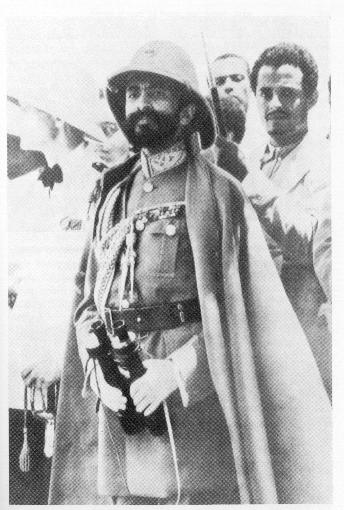
APRIL 21, 1966, THE GROUNATION DAY ! . Presumably because of the spread of the Ethiopian Church in Trinidad, Haile Selassie was invited to visit that country. Jamaica was then in the throws of an ongoing national social crisis in which Rastas were perceived by the establishment as a revolutionary threat which had to defuse; a team of social scientists had advised the government that one way to do this was to foster close ties with the real Ethiopia. Accordingly, the Emperor was invited to make a stop in Jamaica. On April 21 Haile Selassie arrived in Kingston. Greeted at the airport by thousands of dreads in white robes chanting "Hosanna to the Son of David", Haile Selassie granted an audience to a delegation of famous Elders, including Mortimo Planno and probably Joseph Hibbert. He urged them to become Orthodox and held out the possibility that jamaican settlers could receive long-grants in South Ethiopia, convincing the Rastafarian brothers that they should not seek to immigrate to Ethiopia until they had liberated the people of Jamaica.
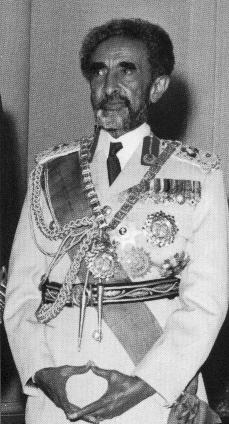 THE
JAMAICA MISSION. In 1970, at Hibbert's invitation, Abba Laike Mandefro
began to evangelize the Rastafarians in person. In the course of a year he
baptized some 1200 dreads and laid the foundation for the church's subsequent
growth. He also encountered fierce opposition from those Elders who taught
that Haile Selassie was Jah in essence and demanded "baptism in Ras Tafari's
name". In Montego Bay, only one dread accepted Orthodox baptism; Laike Mandefro
baptized him "Ahadu" (One
Man).
THE
JAMAICA MISSION. In 1970, at Hibbert's invitation, Abba Laike Mandefro
began to evangelize the Rastafarians in person. In the course of a year he
baptized some 1200 dreads and laid the foundation for the church's subsequent
growth. He also encountered fierce opposition from those Elders who taught
that Haile Selassie was Jah in essence and demanded "baptism in Ras Tafari's
name". In Montego Bay, only one dread accepted Orthodox baptism; Laike Mandefro
baptized him "Ahadu" (One
Man).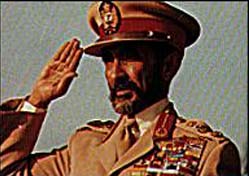
THE ECUMENIST CRISIS. A major crisis struck the young church in 1971, when a public service marking the ninth anniversary of Jamaican Independence was held in Kingston. Anglican, Roman Catholic, and Orthodox (Greek and Ethiopian) clergy all participated in the service. The Rastas were scandalized that Orthodox would pray with representatives of "false religions"; hundreds of baptized members defected, and an entire parish was lost. Many of these persons joined the organized Rastafarian churches which were beginning to replace the traditional Elder system, and which soon incorporated widely varying degrees of Ethiopian Orthodox liturgical and theological influence.
EWF RASTAFARI. Besides the heretical syncretist groups, a legitimate Orthodox Rastafari Movement continued to flourish as the backbone of the Jamaican Church. The EWF under the leadership of Dunkley and Hibbert had enormous prestige, being tied both to the roots of the movement in Garveyism and directly to Jamaica. The EWF retained the political and social aspects and the distinctive cultural features of classical Rastafari while advocating a rigorously correct and canonic Orthodoxy, venerating the Emperor as a holy living ikon of Jah but not worshiping him. The first steps toward Orthodox Jamaica were being taken, albeit by people whose main secular goal was to leave the country as soon as possible!
ON AUGUST 27, 1975, HAILE SELASSIE DIED. With his death came various forms of rationalization from many Rastafarians. The responses ranged from "his death was a fabrication" to "his death was inconsequential because Haile Selassie was merely a personification of God". According to current belief, "When Selassie died, his divinity did not die with him, the Ras Tafari lives on through individual Rastafarians".
THE SHEARING OF LOCKS. The Ethiopian church, like many Orthodox churches under communist rule, endured terrible persecution which it survived partly by compromise with the persecutors. The Marxist regime in Addis Ababa was very unenthused that an emperor-venerating and/or worshiping cult was flourishing in a part of the world otherwise ripe for revolution.
Home | Releases | What's new | Audio samples | Audio-Video Streaming | Orders | Ska history | Patois dictionary | I-tal food | Links | Contact us Guestbook | Message Board | Feedback


Copyright©1998-2002 Arrayed Roots Media.